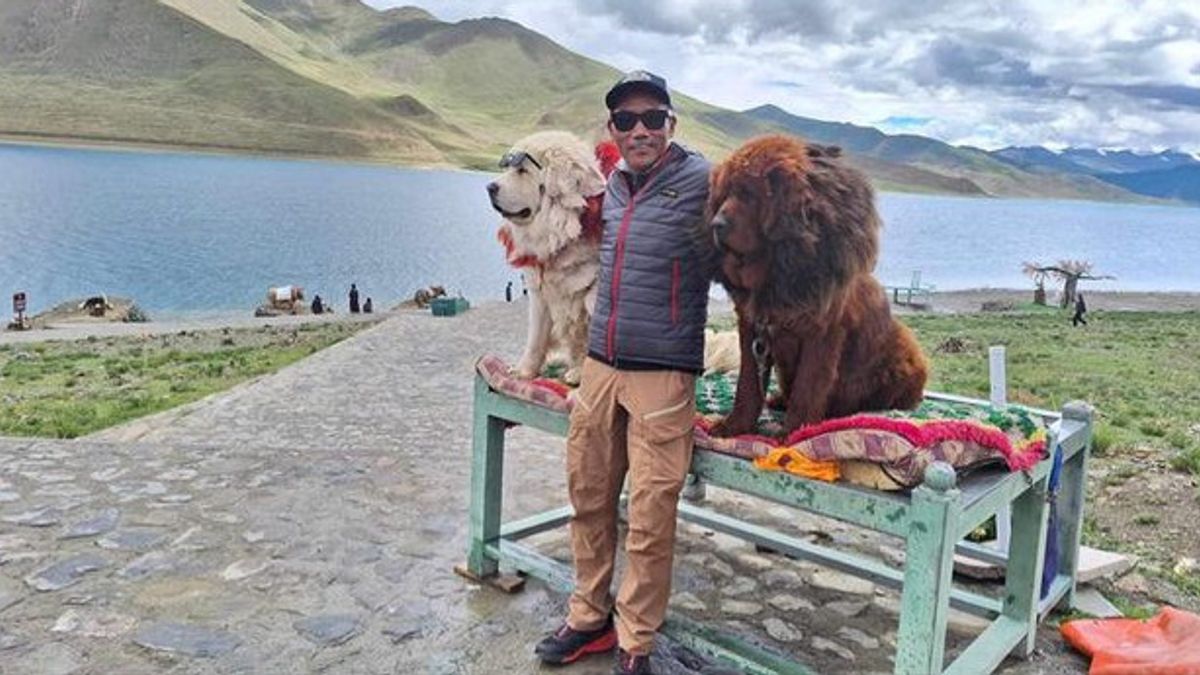JAKARTA - Holding the record for the most number of people who have reached the top of Mount Everest, Kami Rita Sherpa said that the current conditions of Sherpas are different from those of his time, they want an increase in the welfare of the guides.
The Nepali climber received a hero's welcome when he returned to Kathmandu to reach the summit of Everest for the 28th time last May. But all that joy seems to have worn off as he observes the ups and downs of life from a chair in the neat little living room of the apartment he rents.
"There is no future in Nepal," the 53-year-old father of two told Reuters, as quoted on July 20.
"Why live here?" he asked, speaking in his native Nepali and some English.
"We need a future for ourselves... for our children," he said.
Wearing a baseball cap emblazoned with the Legend of "Everest Man," while the remains of her face blackened from the burns from the wind and snow still visible, Kami Rita is clearly proud of her accomplishments.
He is grateful that the money he earns as an expedition guide has helped him move to the Nepali capital, so that his children can get the education he never had.
His son (24) is studying tourism, while his daughter (22) is taking an Information Technology course.
"This would not have been possible if I had continued to live in Thame and not hike," said Kami Rita, who left school in his village of Moutain when he was about 12 years old.
Guinness World Record awards and certificates fill the display case behind him. Posters of Kami Rita on Mount Everest also adorn the walls. However, he spoke of immigrating to the United States to find new opportunities for his family.

Kami Rita was born in the same Himalayan village as Tenzing Norgay, a sherpa who along with New Zealand's Sir Edmund Hillary made the first summit of Mount Everest 70 years ago.
Thame Village, as it's called, is in Solukhumbu, a district that has been a mecca for mountaineers since its first ascent on May 29, 1953.
Located on the border with Tibet in China, Solukhumbu's highest peak is Mount Everest, the world's highest peak at 8.849 meters (29.032 feet).
Besides Everest, there are also Lhotse (8.516 meters), Malaku (8.481 meters), Cho Oyu (8.201 meters), Gyachung Kang (7.952 meters), and Nuptse (7.855 meters), a list of names that every top mountaineer would want in their curriculum vitae.
Sherpas themselves are an ethnic group living in the Everest region, always the backbone of mountaineering expeditions. They repair ropes, ladders, carry goods and also cook, earning between USD 2.500 and USD 16.500 or more, depending on experience, on a single expedition.

But young sherpas, according to Kami Rita, are turning their backs on this life.
"The new generation of Sherpas don't want to climb. They want to go abroad to find a better career," he said.
"In the next 10-15 years, there will be fewer sherpas guiding the climbers. Their numbers are less now," explained Kami Rita.
That said, many famous Sherpa guides have left Nepal to seek better opportunities in the West, especially in the United States.
Indeed, the famous Tenzing Norgay also immigrated, but only as far as neighboring India, where he worked at a climbing school.
Mountaineering and trekking attract thousands of foreigners to Nepal each year, contributing more than 4 percent or USD 40 billion to the economy.
Nepal earned USD 5.8 million in permit fees, USD 5 million from Mount Everest alone, during this year's March-May climbing season.
Hiking tour company officials estimate more than 500.000 people work in tourism, but many remain economically vulnerable in this impoverished nation of 30 million people.
"The government is not doing much for the welfare of the sherpas," said Kami Rita, urging authorities to roll out welfare schemes such as pensions, pension benefits, and educational facilities for their children.
اقرأ أيضا:
Expeditions employing the sherpas must take out life insurance for them, but the fee is only 1.5 million Nepalese rupees (about USD 11.300).
"This should be increased to 5 million rupees (about 38.000 US dollars)," said Kami Rita, stroking her bruised cheek gently.
It is known that three Sherpas died last month while crossing the dangerous Khumbu Falls on Everest.
The English, Chinese, Japanese, Arabic, and French versions are automatically generated by the AI. So there may still be inaccuracies in translating, please always see Indonesian as our main language. (system supported by DigitalSiber.id)


















